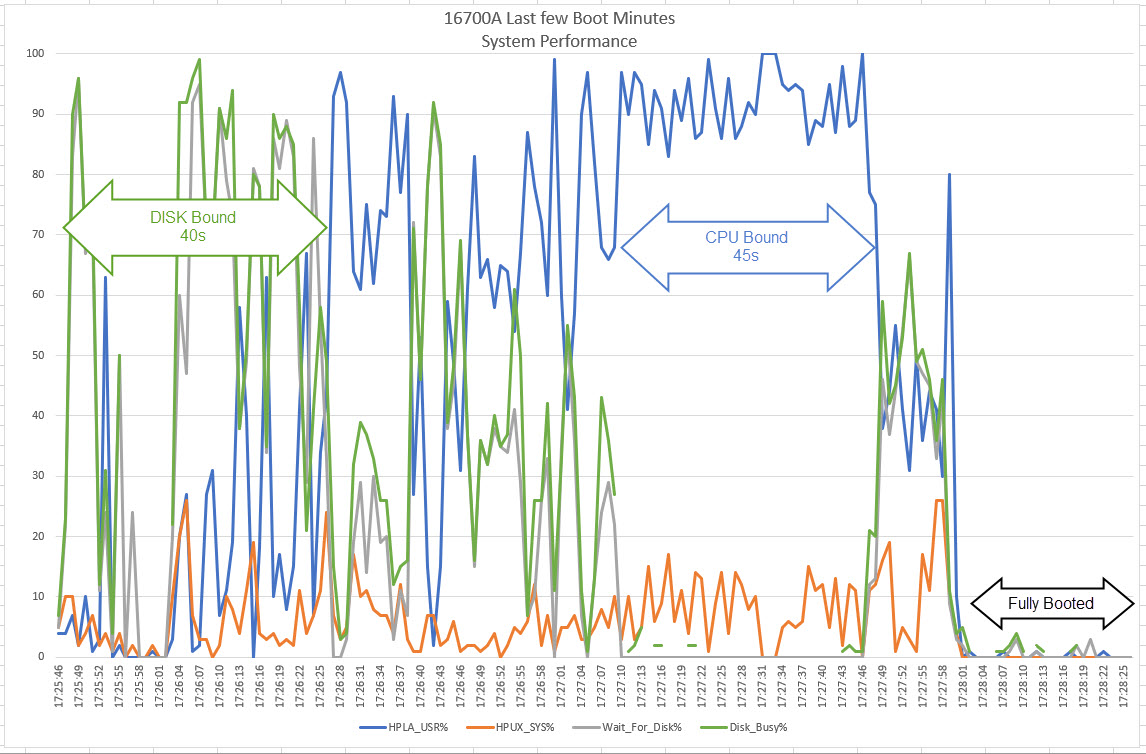HP 16700A boot times and optimization
I’ve been playing with my HP 16700A Logic Analyzer and looking at boot times.
Originally the HP 16700A came with an internal SCSI drive, which was still functioning after 15 or 16 years. This SCSI drive was a 4GB Medalist Pro like a ST34520N or similar. This drive was noisy and I wanted to replace it with something solid state and hopefully gain some speed.
Enter SCSI2SD
The SCSI2SD is a SCSI to SDcard adapter that is available from inertial computing and the original site codesrc website out of Australia. Pretty cool little device that attaches to your PC via USB for setup and configuration. The earlier versions (v4 and earlier) were fairly slow, but newer versions have added synchronous SCSI support. I originally imaged the hard drive using linux dd and wrote it back to the SD card. While I think this worked, I wanted a completely fresh install to play with, and used an externally attached SCSI CDROM drive and the boot disk to re-ignite.
My current boot times with SCSI2SD v4
From cold boot to the black/white text bios screen: 25 seconds
From Boot PRI IPL N response to beep: 35 seconds
From Boot PRI IPL N response to “Starting Logic Analysis system”: 1:05
From Boot PRI IPL N response to Agilent LA System Loading window at top of screen: 1:44
From Boot PRI IPL N response to Fully Rendered App, ready to use: 3:20
Analyzing System Performance during boot
Using SAR launched from inittab collecting data once a second, I analyzed the boot performance to see exactly where the time was being spent. Was the system spending a lot of time waiting for the disk? Was it spending a lot of time waiting for the CPU?
I’m no expert system analyzer. No server specialist. But it sure looks like me that, at least during the boot, that the system is waiting for the disk I/O to finish so it can get on with the processing. When you see areas of disk busyness and high waiting times, the CPU stops or slows down.
Next Steps
I’m going to purchase a SCSI2SD version 6. As mentioned, the synchronous SCSI support should speed things up considerably. While the overall unit during normal operation might be CPU bound, I really think that the boot process could be optimized. Does it matter? Does waiting 2 minutes instead of 3:30 really make a difference? No, probably not, but I’m sure there are other operations which would benefit from a faster I/O subsystem. Besides, I simply love playing around with this stuff, which is really the main point of the exercise!
There have been rumors about v6 not playing nice with the 16700A-series, about it conflicting with the SCSI2SD. I have a pet theory that the new synchronous scsi support of the version 6 conflicts with older, dumber, CDROM drives — and that the CDROM drive don’t know how to downgrade to async support. Alex from Inertial Computing has said that he thinks recent firmware upgrades have solved this problem.
I’ll also follow up with some installation images.
